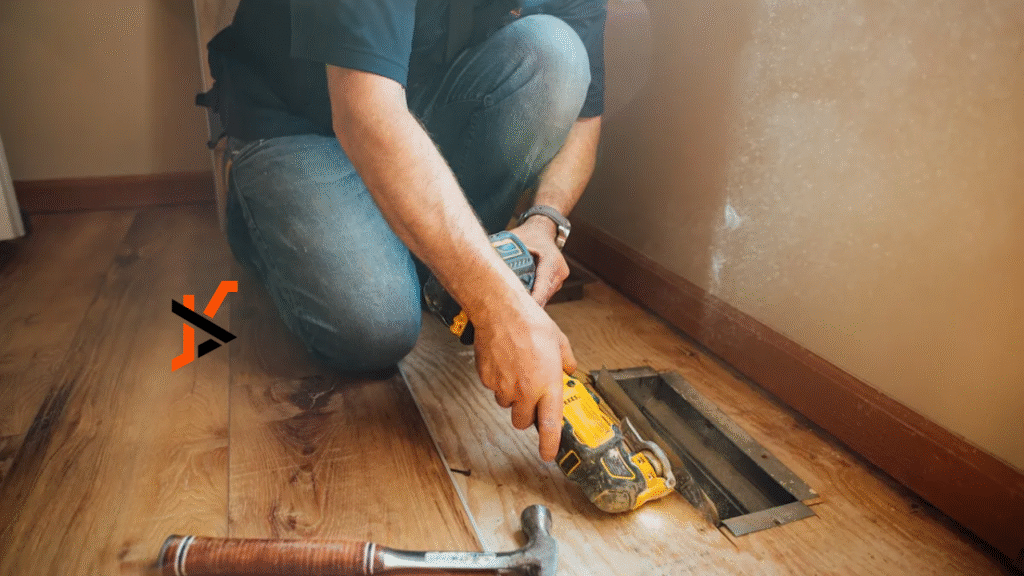Why Every DIYer Needs an Oscillating Multi-Tool in Their Arsenal
For anyone who enjoys tackling home projects, the oscillating multi-tool is arguably one of the most valuable pieces of equipment to own. Its reputation comes from sheer versatility—offering the ability to handle tasks that would typically require a whole bench full of specialized oscillating tool.
From precise plunge cuts to effortlessly sanding rough edges and even lifting old carpet, this compact powerhouse is a must-have for any DIY enthusiast. Here’s why the oscillating multi-tool deserves a permanent spot in your toolbox.
The All-in-One Workhorse: Why It Stands Out
What makes the oscillating multi-tool truly exceptional is its adaptability. This tool can perform delicate cuts in drywall, wood, and even metal with remarkable precision and minimal effort. Whether you’re creating access panels in walls or removing decayed wood sections, an oscillating tool delivers clean, efficient results.
Here are some of the most popular ways DIYers put this tool to work:
1. Precise Plunge Cuts in Decking
Plunge cuts often demand a steady hand and pinpoint accuracy. The oscillating multi-tool excels in these situations, making it easy to cut into decking to fit fixtures like railings or posts without damaging the surrounding material.
2. Smoothing Rough Edges
Instead of pulling out a bulky orbital sander, you can use your oscillating tool with a sanding attachment to smooth down rough edges. It’s especially handy for working in tight or awkward spaces.
3. Trimming Protruding Screws and Pipes
Nothing ruins a clean finish like screws or pipes sticking out awkwardly. After a plumbing or carpentry job, the oscillating multi-tool can quickly and cleanly trim these protrusions flush to the surface.
4. Scraping Away Old Paint
Forgot to clean up paint drips months ago? No problem. A scraping attachment on your multi-tool can lift dried paint from floors, walls, furniture, or windowsills—without damaging the underlying surface.
5. Clearing Out Stubborn Grout
Removing old grout can feel like a battle—unless you’re armed with a grout-removal blade for your oscillating tool. It makes quick work of dislodging hardened grout from tiles and corners.
6. Lifting Worn Carpets
Pulling up carpets from tack strips is a breeze when using a blade designed for the job. The oscillating multi-tool even reaches tight corners where larger tools simply won’t fit.
7. Repairing Damaged Door Jambs
A broken door jamb isn’t just unsightly—it can also affect door alignment. With an oscillating tool, you can cut out damaged sections cleanly and prepare the surface for a seamless repair.
Why DIYers Keep Coming Back to the Oscillating Multi-Tool
✅ User-Friendly Design
Many modern multi-tools are built for comfort. Features like ergonomic handles, anti-slip grips, and well-balanced weight distribution mean less strain on your hands—even during longer projects.
✅ Enhanced Safety Features
Unlike some power tools, oscillating multi-tools are relatively safe to use. Innovations like the Starlock accessory system (developed by Bosch and Fein) ensure a secure connection between the tool and attachments. This reduces wobbling and accidental slippage.
✅ Superior Efficiency with Brushless Motors
Today’s top models often include brushless motors, which generate more power, extend runtime, and require less maintenance compared to older brushed designs.
✅ Corded or Cordless Flexibility
You can choose between corded tools for endless power near an outlet, or cordless models for freedom on job sites without electricity. Many cordless versions now feature high-capacity batteries that last through hours of continuous use—and no annoying cords to tangle.
✅ Built to Last
With proper care, an oscillating multi-tool can serve you for years. Routine maintenance—like changing worn blades, lubricating moving parts with silicone grease, and tightening loose screws—will keep it performing at its best.
Choosing the Right Oscillating Multi-Tool
The benefits of this tool are only as good as the model you pick. To get the most from your investment:
- Stick to trusted brands like DeWalt, Milwaukee, Makita, Bosch, or Ryobi.
- Look for features like variable speed settings, brushless motors, and quick-change blade systems.
- Consider ergonomics and built-in safety features.
Final Thoughts
Few tools match the versatility and convenience of an oscillating multi-tool. From cutting and sanding to scraping and trimming, it’s a reliable companion for nearly any DIY project.
If you’re building out your toolbox, prioritize quality when choosing a multi-tool. With the right model and a bit of maintenance, this all-in-one wonder will quickly become your go-to for everything from small repairs to major renovations.

